The water pump fits onto the front of car engine. It keeps the coolant circulating to remain engine at ideal operating temperature. It actually should be called as coolant pump for it should be pumping a mixture of 50% coolant and 50% water depending on the climate.
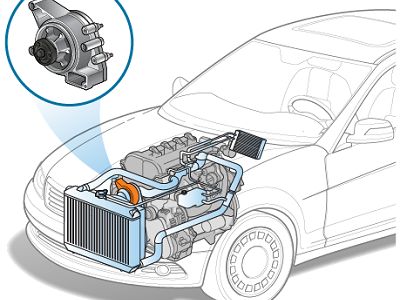
Why we need cooling system
The ideal operating temperature for engine is about 200℉, or 90℃. This temperature is hot enough for a fluent flow of oil, and nice combustion in the cylinder, while it is not so hot that the engine would be damaged buy the heat. However when engine runs, the temperature would be much higher than that. So the engine parts which are close to the combustion process need to be cooled down and that is why we need the cooling system.
Cooling system, typically almost has the same structure, and works the same way probably applies to every vehicle that you are going to come across.
How does coolant work
Coolant, which is a mix of water and ethylene glycol, is used to carry heat away from the hottest parts of the engine and out to the radiator where it is cooled down.
When the engine is at operating temperature, cold coolant is pulled out of the bottom of the radiator by the pump, then it is pumped into the front of the engine block. It travels around the cylinder, up into the head where it cools the valve and then comes back out of the cylinder head and over to the radiator to be cooled down.
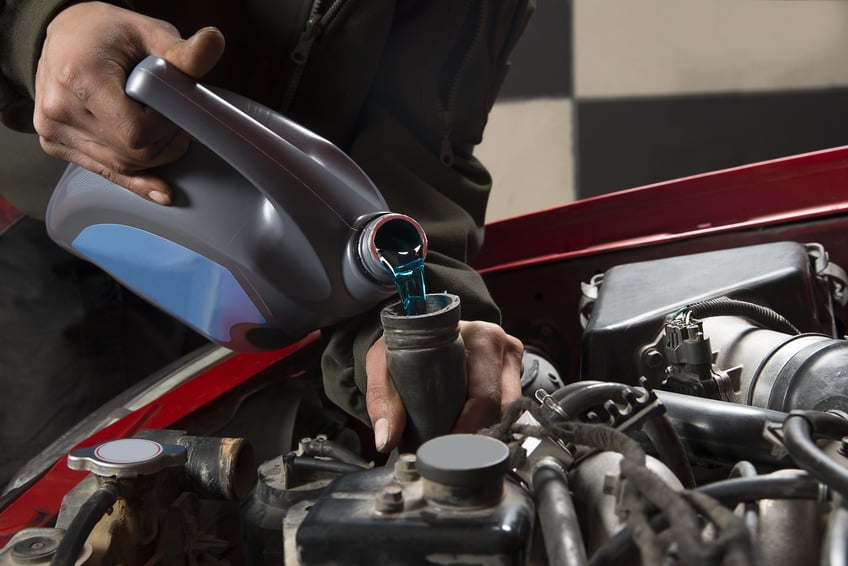
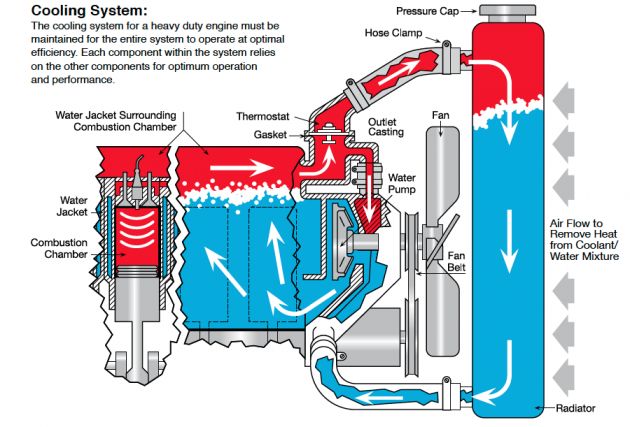
On the head of inner cylinder, there is a thermostat valve which is like a temperature controlled valve can control the flow of coolant to the radiator. When the engine is cold, the thermostat is closed and the water stays inside the engine system until it is warmed up. Once that coolant is up to temperature, the thermostat opens, so coolant can flow all the way around the radiator where it is cooled by the airflow of driving along in a vehicle.
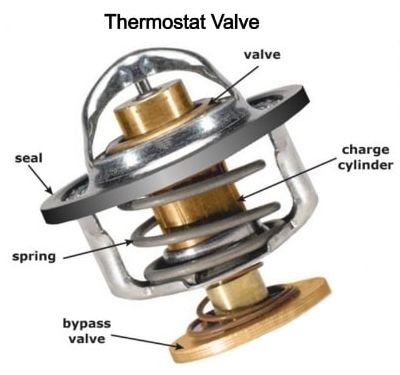
How does water pump work
The mechanical water pump consists of the following parts: housing, impeller, bearing assembly, seal, etc. It keeps the coolant in the engine circulation.
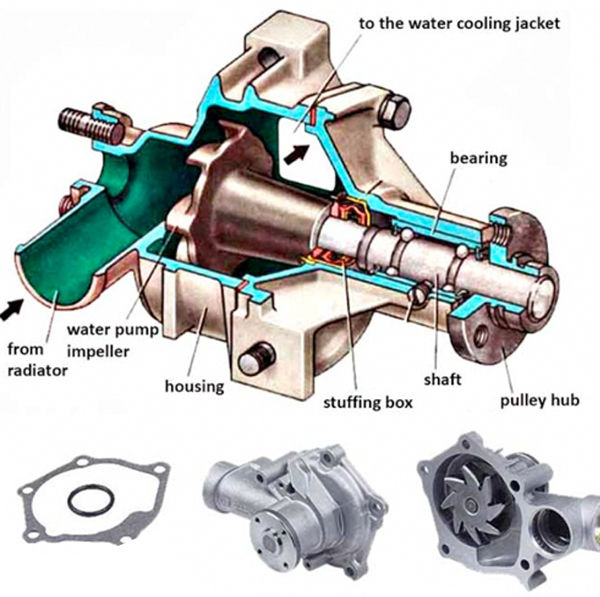
The pump fits onto the front of the engine, and it connects with a pulley which is driven by a belt from the crankshaft. The same belt also drives the alternator. Now some water pumps are driven by the timing belt, or directly off the camshaft or crankshaft. No matter how it is driven, the water pump has connection from the crankshaft by a belt. That means when the engine is running, the water pump is also running.
When the engine is cold, the thermostat is closed and the coolant is not passing through the radiator but we still need to circulate that coolant within the engine so that there is an even heating going on inside. So, the water pump is always pumping.
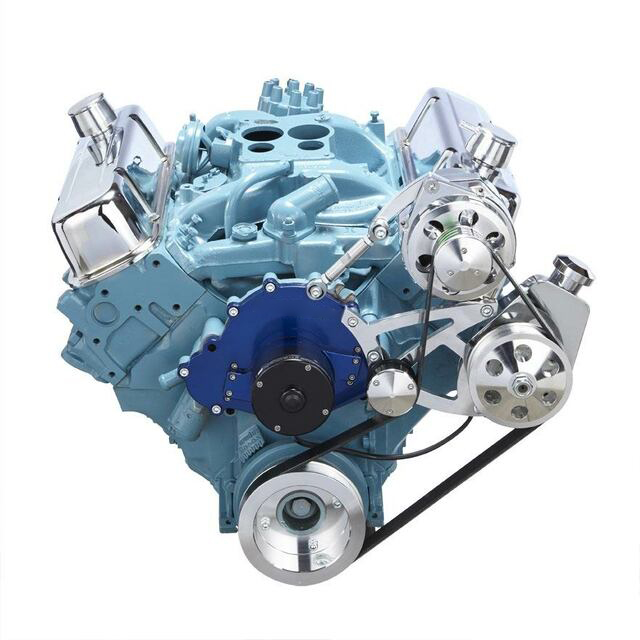
Parts of water pump
Now, let us check out the parts of a water pump. In terms of parts, the pump housing is made from cast aluminum and there is nothing special.
In the middle of a pump, it is a shaft running through the housing. On one end, there is a flange which mounts to the pulley. This pulley is attached to the belt which runs on the crankshaft. That is what drives the pump. On the other side of the pump, it is a impeller which sits inside the hole of engine. Coolant comes into the pump here, through the water pump inlet which is connected to the bottom of the radiator.

Coolant is pulled up and into the center of the impeller along this channel. Then the impeller has blades which spin the fluid around, flinging it outwards and creating a lower pressure area in the middle that pulls in more coolant.
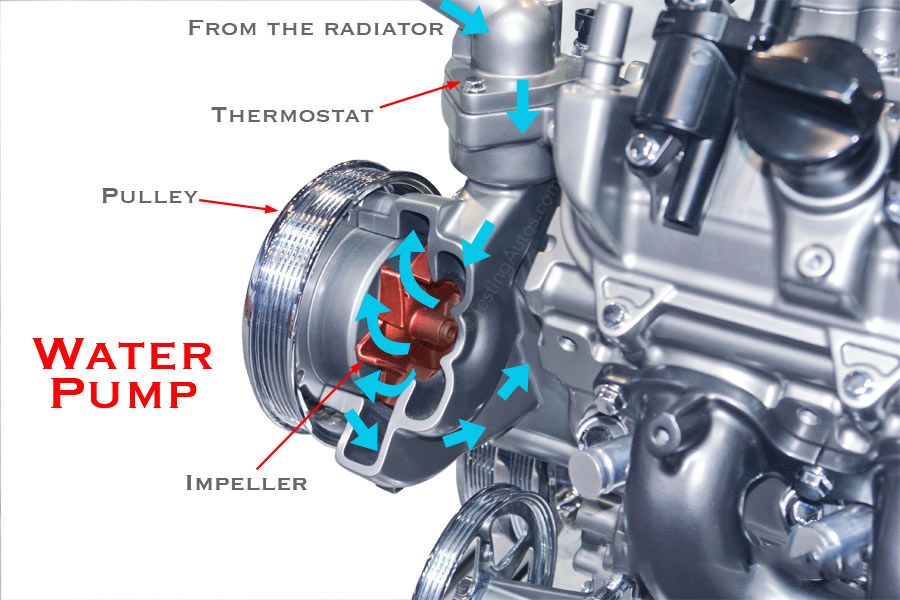
This is called a centrifugal impeller pump. Just around the impeller, on the pump housing, there is a spiral shape cast into the water pump and that is called a volute maybe. The shape of this volute is what creates the pressure that pulls water into the pump. The combination of the volute and this plate that closes the impeller, creates a closed route for the coolant instead of just throwing it out randomly.
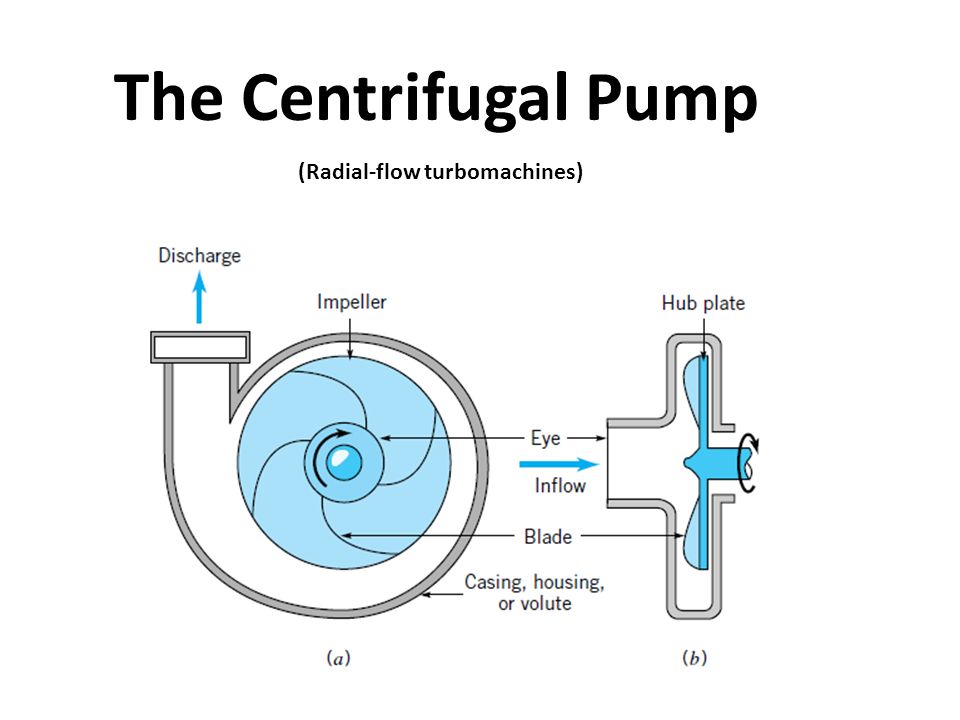
Nowadays, water pumps are incredibly powerful. A pump of normal size will empty a small swimming pool in about an hour, and at high engine speeds this is going to circulate all the coolant right around the engine 20 times every minute.
When to replace a water pump
Water pumps are sealed for life, and they are replaced as a whole unit, generally done at the same time as the timing belt is replaced because you have got to dismantle a lot of stuff to get in here. Water pumps are a part that are cheap to buy, but very expensive in labor to replace.
You will never work on the insides of a water pump because it is sealed for life and it is treated as a consumable. When a pump needs to be replaced, you need to replace this whole unit except the pulley.
If we take a look at a mechanical water pump, we can see the shaft, or spindle, is being turned by the pulley. At the front here is the water pump bearing. This is kind of a special bearing because it is incorporated directly into the shaft and that is the main reason why this thing is replaced as a whole unit.
The bearing is lubricated at the factory with a grease. It does not stop coolant from leaking along the shaft, in fact any water getting into the bearing is terrible news.
Further back along the shaft, we have the mechanical seal, towards the impeller. Sealing a rotating shaft from pressurized liquid has always been a challenge. The mechanical seal in here is pretty smart. It consists of two faces that are pressed very close together by a spring. And they are separated and lubricated by a thin film of coolant. The gap between them which is about a micron, which is a thousand of a millimeter, just wide enough to contain a static film of lubricant, but not so wide that lubricant can flow through.
Now inevitably friction will cause the seal to get hot, and some steam will be created when this tiny film of liquid boils up. While we definitely do not want to get any coolant into the bearing. For it breaks down the grease and that is gonna cause a huge problem for us later.
So between the mechanical seal and the bearing is a small hole, called the weep hole. When a little bit of liquid that gets created from boiling of the film and the mechanical seal can escape through that hole down the channel here , then on this particular pump it is channeled out to the back of the pump and then it runs down the fronts of the engine block.
Now it is totally normal for there is some liquid escaping there. Every now and then, manufacturers send around technical bulletins telling technicians to stop replacing water pumps every time they spot a bit of coolant around the weep hole and that it is perfectly normal.
But if there is a lot of liquid and crystallized coolant around here, particularly if you have got coolant dripping down off the oil pan which is what is underneath here, then you might have a leaky water pump.
When water pumps are leaking, what goes wrong with them?

Now basically a water pump is gonna fail in one of three ways.
1.Seal issue
When a pump leaks coolant, it may because the seal is not working, and that is almost always caused by a bearing failure which puts extra strain on the seal itself. The solution is to replace the water pump.
2.Bearing issue
When a pump becomes noisy and difficult to turn. That would be a worn bearing. To check with this, you can pull the belt off the engine, turn the pulley by hand, and it should turn easily and smoothly. If you have got a growling noise from the water pump then it is likely a bearing issue. The solution here, to replace the water pump.
3.Impeller issue
Finally, the impeller can fail. Well, this is a tricky one because from the outside there is nothing wrong with the water pump. But the blades can break off the impeller if it is plastic, or with this one it is steel which means the blades can corrode away and we are left with no blades at all.
One sign of a failed impeller is that the engine is overheating, but you are getting no heat through the blower. You can check for a failed impeller by getting the engine up to temperature, so that the thermostat is open, turning off the engine and then having someone start the engine while you squeeze the top radiator hose. And you should feel the coolant immediate start pulsing through. If you do not feel that, suspect the impeller. If the impeller is destroyed, then guess what the solution is? Replace the water pump.
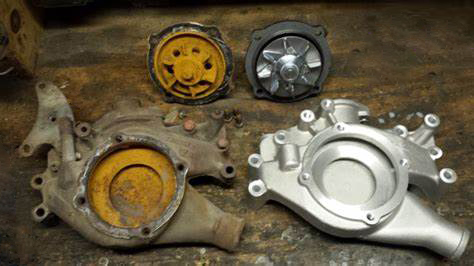
Thank you guys for accompany. We have talked about the engine water pump. Looking forward to share more about auto parts with you. See you next time.
Post time: Aug-01-2022